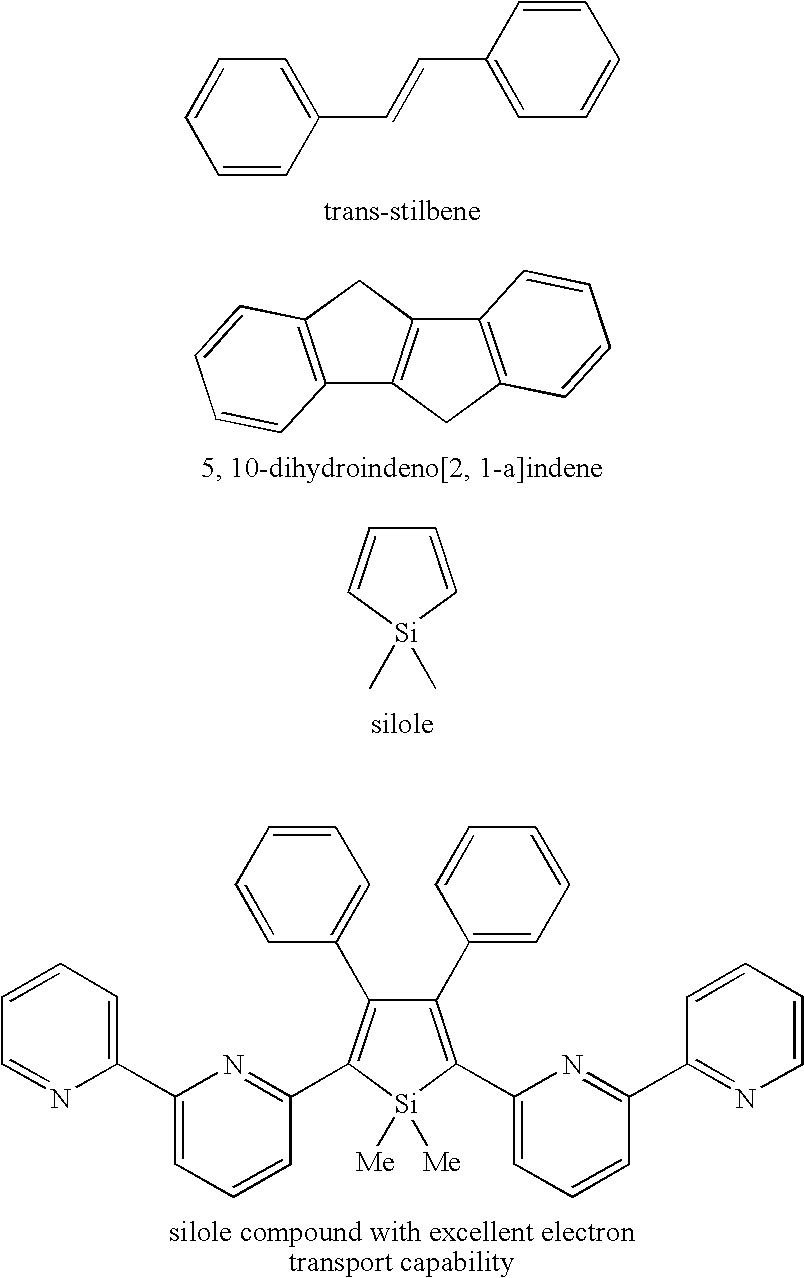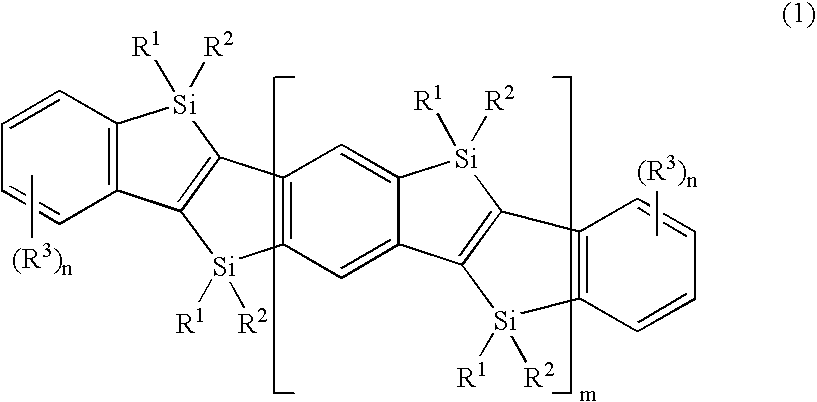N-conjugated organic material of polycyclic fused ring type,intermediate therefor, and process for producing n-conjugated organic material of polycyclic fused ring type
a polycyclic fused ring and organic material technology, applied in the field of condensed polycyclic conjugated organic materials, can solve the problems of limited number of organic materials and serious constraints in synthesis reactions, and achieve good light-emitting properties and high charge-transport capability
- Summary
- Abstract
- Description
- Claims
- Application Information
AI Technical Summary
Benefits of technology
Problems solved by technology
Method used
Image
Examples
example 1
[0032] Synthesis schemes for example 1 will be shown in reference to reaction formula (V).
[0033] First, taking bis[2-(ethoxydimethylsilyl)-5-(methoxy)phenyl]acetylene (2ba) as an example of the raw material compound of formula (15), its synthesis method will be described in reference to reaction formula (V) below.
[0034] An n-butyl lithium / hexane solution (1.6 M, 18.6 mL, 29.8 mmol) was added dropwise to a diethylether solution (280 mL) of the compound 1b (5.50 g, 13.9 mmol) at −35° C. The mixture was stirred for 4 hours while being kept at −30° C. to −25° C. Then, (N,N-diethylamino)dimethylchlorosilane (5.0 g, 30.2 mmol) was added dropwise to the reaction solution over 5 minutes at −25° C.
[0035] After the dropwise addition was completed, the mixture was stirred for 12 hours while slowly raising the temperature of the reaction mixture to room temperature. Thereafter, ethyl alcohol (3.7 mL, 63.4 mmol) and ammonium chloride (0.40 g, 7.5 mmol) were added, followed by stirring for ano...
example 2
[0087] The following will describe other synthetic examples based on reaction formula (VI) below.
[0088] First, a method of synthesis from 1,4-bis[(2-bromophenyl)ethynyl]-2,5-dibromobenzene (6) as a raw material will be described.
[0089] A 3 / 1 toluene / triethylamine (9 mL) solution of 2-bromo-1-ethynylbenzene (90 mg, 4.98 mmol) was added to a mixed 3 / 1 toluene / triethylamine (12 mL) solution of 1,4-dibromo-2,5-diiodobenzene (1.15 g, 2.35 mmol) dichlorobis(triphenylphosphine)palladium (II) (33 mg, 47 mmol), and copper iodide (18 mg, 95 mmol) at room temperature and stirred for 12 hours at room temperature.
[0090] A 1N aqueous solution of hydrochloric acid was added to the reaction mixture. The mixture was then subjected to extraction using methylene chloride. The obtained organic layer was washed in a saturated saline solution and dried with anhydrous magnesium sulfate. After removing the drying agent by filtering, the filtered solution was concentrated under reduced pressure. The res...
PUM
| Property | Measurement | Unit |
|---|---|---|
| temperature | aaaaa | aaaaa |
| temperature | aaaaa | aaaaa |
| temperature | aaaaa | aaaaa |
Abstract
Description
Claims
Application Information
 Login to View More
Login to View More - R&D
- Intellectual Property
- Life Sciences
- Materials
- Tech Scout
- Unparalleled Data Quality
- Higher Quality Content
- 60% Fewer Hallucinations
Browse by: Latest US Patents, China's latest patents, Technical Efficacy Thesaurus, Application Domain, Technology Topic, Popular Technical Reports.
© 2025 PatSnap. All rights reserved.Legal|Privacy policy|Modern Slavery Act Transparency Statement|Sitemap|About US| Contact US: help@patsnap.com



